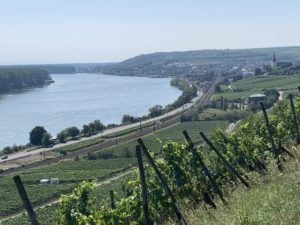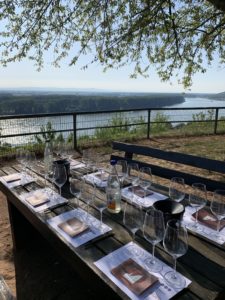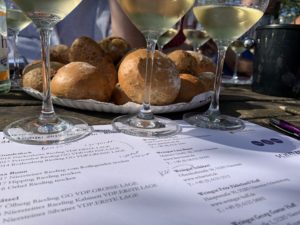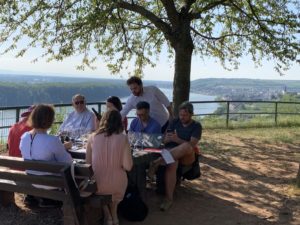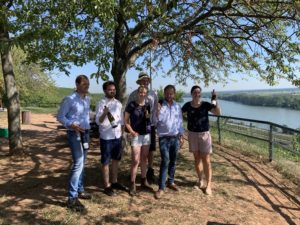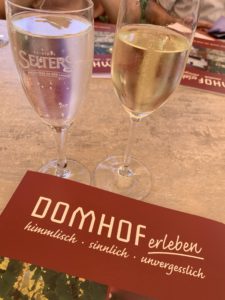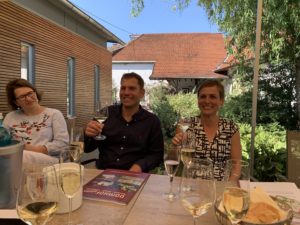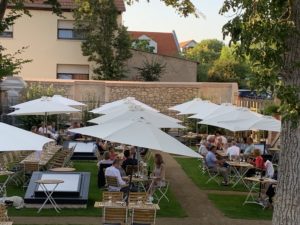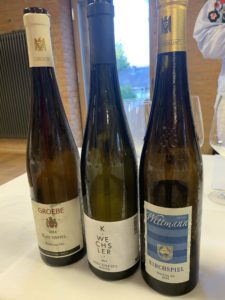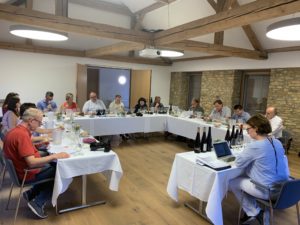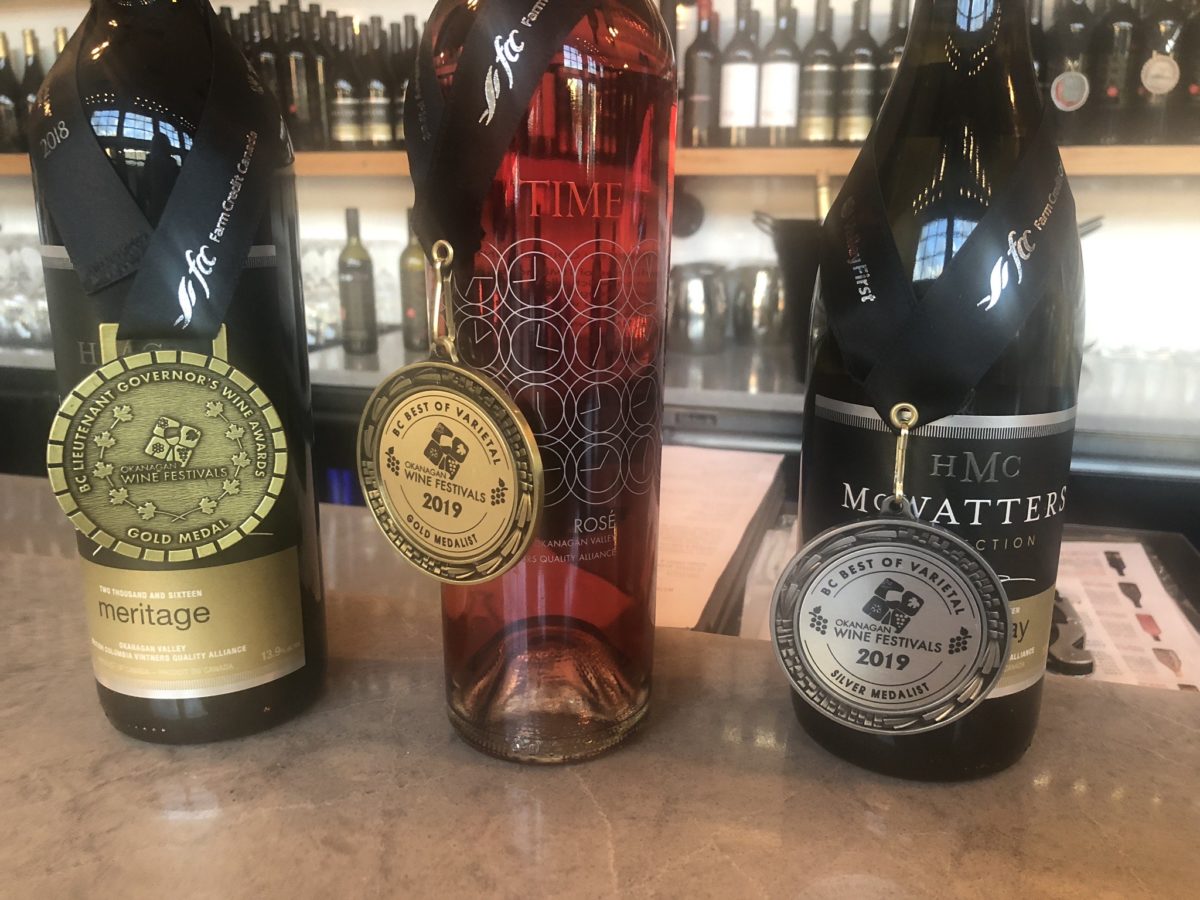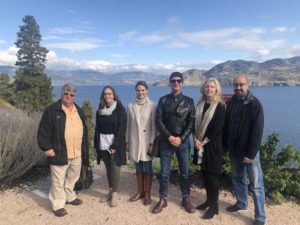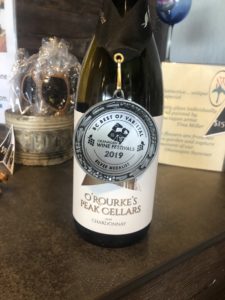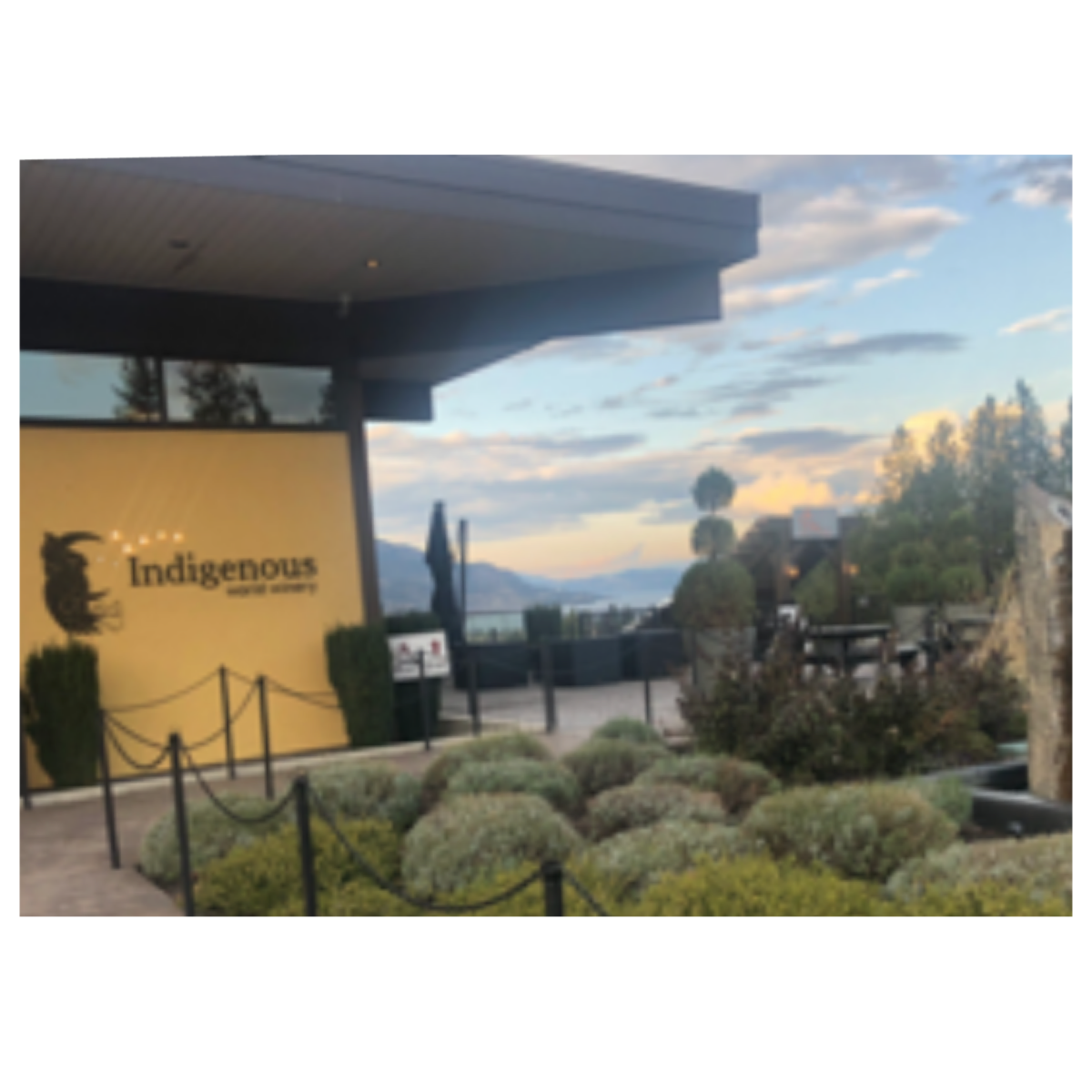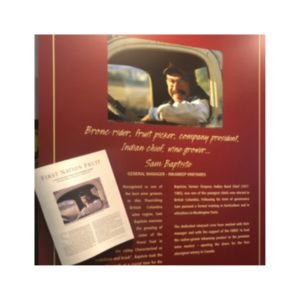I traveled to Puglia, Italy early October 2019 to attend a four-day educational tour. The Educational Tour Guagnano (Salento – Puglia – Italy) “Negroamaro Stories” was carried out with the support of the Comune di Guagnano, the Municipality of Trepuzzi, the Gal Terrad’Arneo, the Municipality of Porto Cesareo, of the National Association of AIS of Lecce, and Solento Wine Shop.
Puglia is geographically located in the south-eastern tip of Italy, covering 7,469 sqm. It is bordered by the Adriatic Sea on the east, by the Ionian Sea on the southeast and the Gulf of Taranto in the south. Its climate is Mediterranean, with hot summer temperatures only partially mitigated with sea breezes.
On my first day I attended the Museo del Negroamaro for a press conference, which kicked off the 2019 “Stories of Negroamaro” tour. In attendance were partner organizations, participating wineries, local politicians, and artist Arianna Greco.
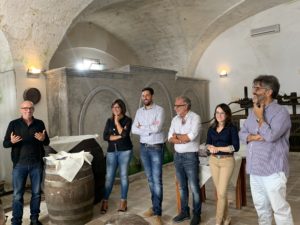
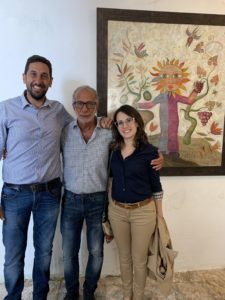
Conference speeches and presentations were given (in Italian) by:
Antonio Rizzo – Ass. cultura e al marketing territoriale del Comune di Guagnano;
Claudio Maria Sorrento – Sindaco del Comune di Guagnano;
Chiara Tondo – Ass. all’Agricoltura del Comune di Guagnano;
Cosimo Durante – Presidente Gal Terra d’Arneo;
Viviana D’Amico – Presidente del Comitato Tecnico Organizzativo del Premio Terre del Negroamaro; and
Titolari e Rappresentanti – Aziende Vinicole Guagnano.
The conference introduced us to the Guagnano and Terra d’Arneo area and presented grape harvest data for 2018-2019.
After the presentations and speeches, I met and mingled with Italian wine journalists, winegrowers and members of the local and regional associations, while tasting the delicious local cuisine.
After lunch, I participated in a tour of the Museo del Negroamaro. I found out that the Museum was formerly a millstone from the 1800s. It now houses antiques and antiquities from yesteryear, such as traditional presses, barrels, fermenters, weighs, pressure switches, and other tools and equipment previously used in the processing of grapes and winemaking. The Museum also houses the Negroamaro Study Center.
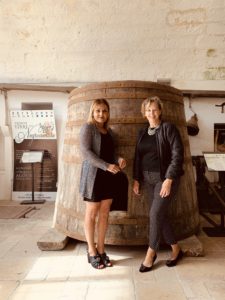
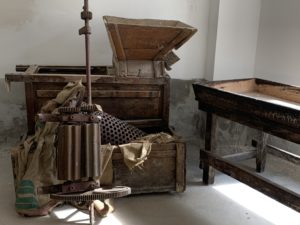
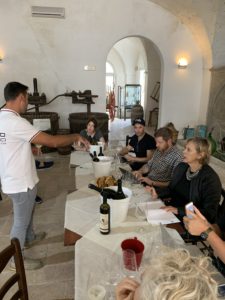
Over the next four days, I will be visiting eight wineries or Cantinas in Puglia and tasting their DOC and IGT wines, with a focus on the indigenous varieties Primitivo and Negroamaro. The participating wineries include: Cantele Cantele; Cantina Sociale Enotria; Vini Leuci; Feudi di Guagnano; Cantine Cosimo Taurino; Cantina Moros di Claudio Quarta; Taurino Francesco; and Tenuta Marano.
The first winery visit was Cosimo Taurino
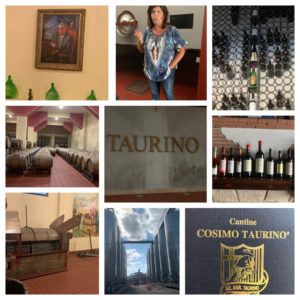
The Taurino family have been growing grapes and making wines in Puglia for seven generations. This multi-award-winning estate owns 80 hectares of cultivated vineyards exclusively with Negroamaro and Malvasia Nera grapes, both indigenous to Salento. The Taurino’s family respect for terroir and for native grapes is inspiring, and their impact on the vinous history of Puglia is unprecedented.
Two wines that really stood out for me were:
Cosimo Taurino, Notarpanaro Salento 2010
100% Negroamaro
Tasting Notes: This wine offers complex aromas of cherries and raspberry, with some notes of wood and spice, which all come through on the palate; this medium-bodied wine has fleshy tannins and a long finish.
Cosimo Taurino, Patriglione 2013
100% Negroamaro
Tasting Notes: This wine has notes of red berries, leather, tobacco, and some traces of pepper. It’s a rich and full-bodied wine with a good balance.
Unfortunately, I could not complete the rest of the tour due to a family emergency.
What I learned in Salento….
About Negroamaro
Negroamaro is a deep, black-colored grape with taste characteristics of black currant, cherry, blackberry and cloves with some cinnamon undertones. It is almost exclusive to the Salento region (Brindisi and Lecce) and is harvested in late September.
Negroamaro is used in 13 regional Dop labels (out of 28 in Puglia) and is produced in the provinces of: Brindisi, Lecce and Taranto: Alezio, Brindisi, Copertino, Galatina, Leverano, Lizzano, Matino, Nardò, Negroamaro in Terra d’Otranto, Salice Salentino, Squinzano, and Terra d’Otranto.
Negroamaro has a high alcohol content with some floral and fruity aromas; this makes it an ideal blending wine because the aroma does not distract from other grape varieties.
The Soil
It is worth mentioning that one of the secrets to the fabulous tasting Pugliese wine is the soil. It’s dense red clay, high in iron-oxide – this provides a sweet, structured, full-bodied wine.
Over the last few years, the wines of Salento have been gaining tremendous success. The next-generation winemakers have both improved the taste and the image of the wines in this emerging wine region.
A special thank you to the municipal administrations, for organizing this wonderful trip. I’m looking forward to going back to Puglia in the near future and learning more about this up-and-coming wine region.
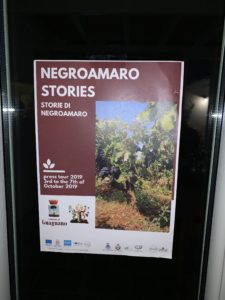
Liz Palmer

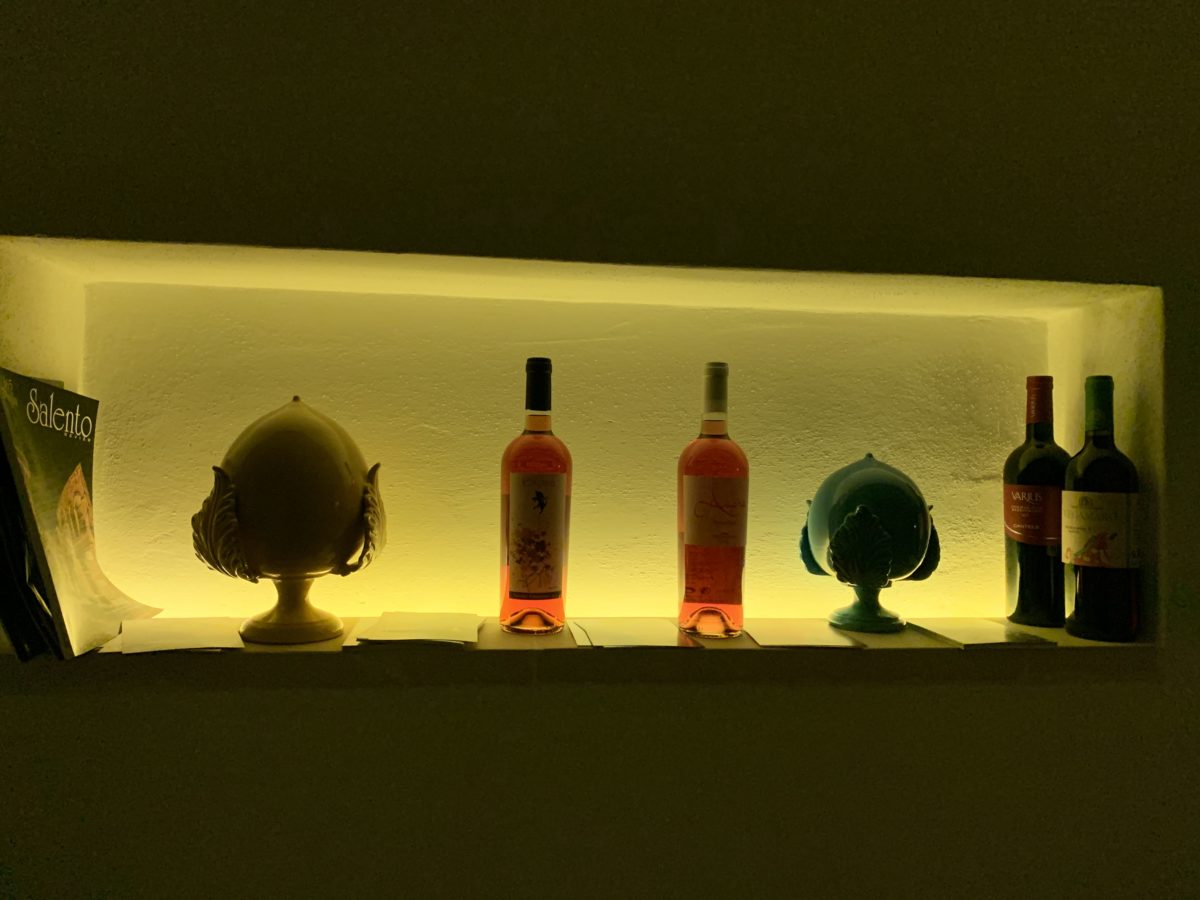


![Exploring the Diversity of the Rheinhessen Wine Region [Part 1 of 3]](https://www.liz-palmer.com/wp-content/uploads/2019/12/Liz-Palmer-Rheinhessen-1-1200x900.jpeg)
